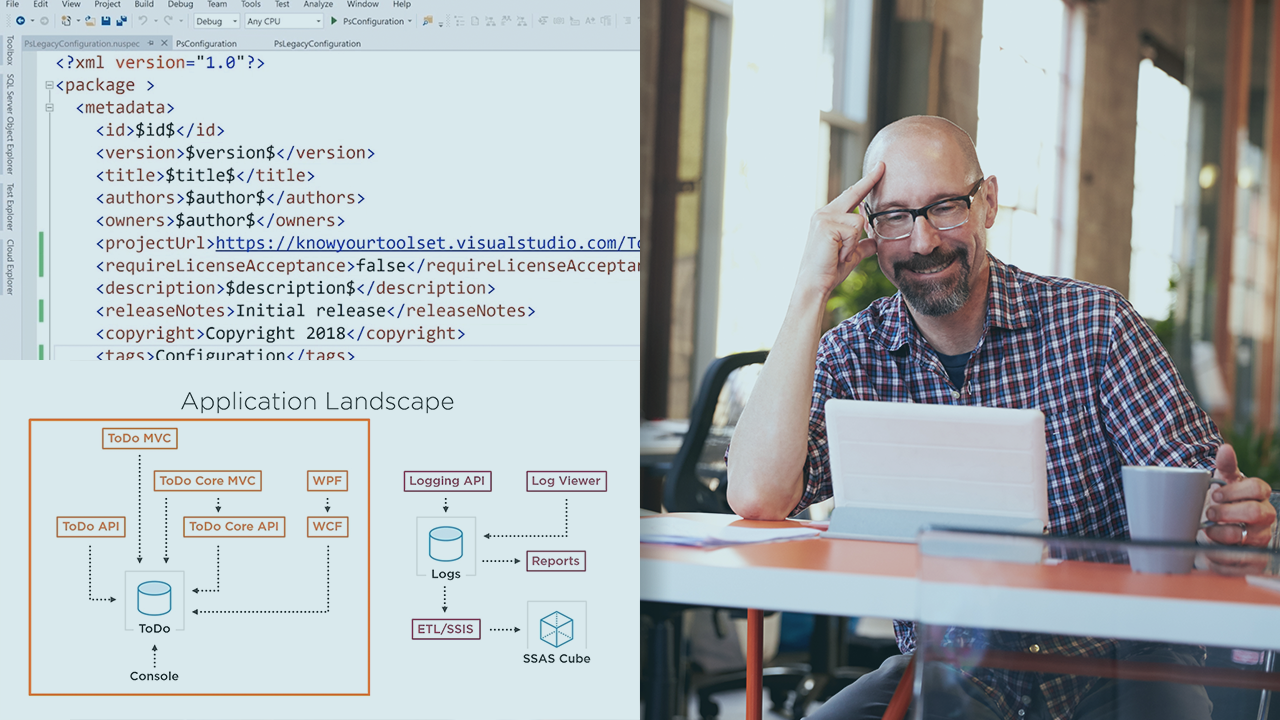- Course
Preparing Existing .NET 4 Applications for Continuous Delivery
Take your existing .NET framework applications and get them organized and ready to be included in a CI/CD pipeline by addressing package dependencies, configuration, and shared libraries, among other topics.

- Course
Preparing Existing .NET 4 Applications for Continuous Delivery
Take your existing .NET framework applications and get them organized and ready to be included in a CI/CD pipeline by addressing package dependencies, configuration, and shared libraries, among other topics.
Get started today
Access this course and other top-rated tech content with one of our business plans.
Try this course for free
Access this course and other top-rated tech content with one of our individual plans.
This course is included in the libraries shown below:
- Core Tech
What you'll learn
Adopting continuous integration and delivery for existing .NET applications is not as simple as setting up build and released definitions within VSTS or TFS. Preparations must be made within the applications themselves to support such a pipeline. In Preparing Existing .NET Applications for Continuous Delivery, you’ll discover those preparations, such as configuration management and dependency management. First, you’ll take some existing .NET applications, – including ASP.NET web apps (all flavors), WPF, WCF, and even console applications, and consider how each should be modified to fit within a CI/CD pipeline. Next, you’ll be re-arranging some things within the apps, which will mean some code modification and project structure changes. Lastly, you’ll create an efficient way to handle custom shared class libraries, and understand how to step into a real-world CI/CD pipeline that delivers a set of related applications across different environments in an automated fashion. Viewers should have a sense of what CI/CD is and have a basic knowledge of the overall structure of .NET applications. In-depth knowledge of .NET is not needed, but a basic familiarity is. When you’ve finished the course, you’ll be able to translate all that you've learned to your own apps. So, if you have existing applications that you are deploying manually and with much effort, this course is for you!

